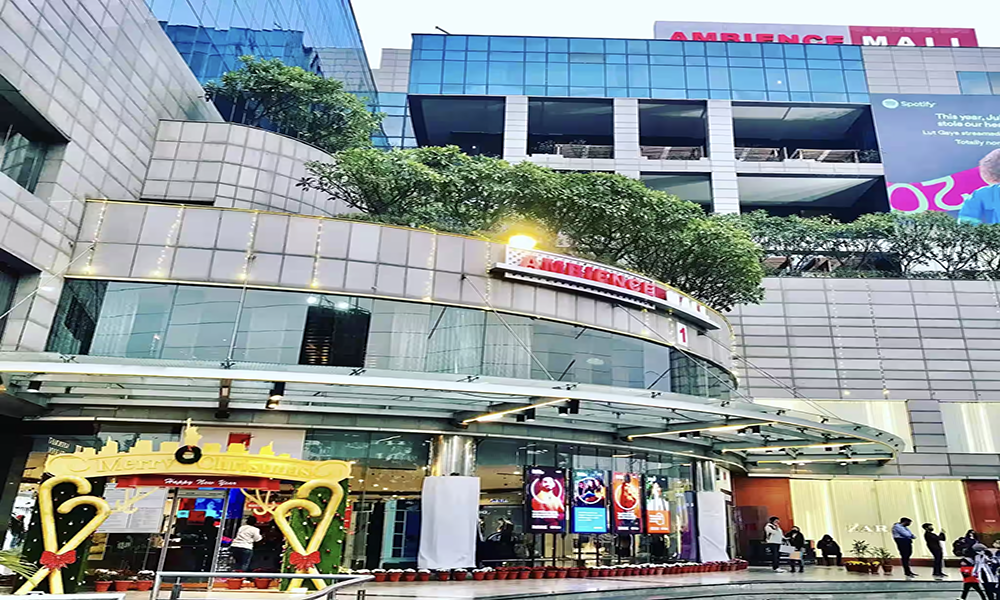Smart Water and Wastewater Treatment Solutions for Malls and Shopping Complexes Using STP, ETP, WTP, RO, WWTP Systems

India's retail sector has seen exponential growth, with malls and shopping complexes emerging across urban and semi-urban regions. Maharashtra, with cities like Mumbai, Pune, and Nagpur, leads the way with numerous malls drawing heavy foot traffic daily. These establishments serve as commercial hubs, hosting retail brands, cinemas, food courts, and entertainment zones.
As consumer lifestyle evolves, so does the infrastructure of shopping centers. With modern amenities, central air-conditioning, and large-scale maintenance, water management becomes a critical operational component. Efficient utility services are essential for ensuring hygiene, comfort, and sustainability within these high-footfall zones.
Water used in cleaning restrooms, HVAC systems, food courts, and landscape maintenance
Malls require large volumes of water daily, not just for sanitation but also for cooling, maintenance, and catering services. Restrooms, housekeeping, food courts, and centralized air-conditioning systems are the primary consumers of water.
Additionally, decorative elements like water fountains and landscaped areas require treated water to maintain hygiene and aesthetics. With such diversified use, malls cannot rely solely on municipal water. Instead, they must manage their water footprint efficiently by integrating water-saving devices and treatment systems to reduce waste and cost.
Food outlets, washrooms, cleaning operations, and HVAC units contribute to wastewater generation.
Every section of a mall contributes to wastewater production. Washrooms generate sewage, while food courts produce grease-laden effluent. HVAC systems and cooling towers discharge chemically treated blowdown water. Housekeeping and daily cleaning operations add to the greywater load.
"In bustling malls, water plays a silent yet vital role—powering cooling systems, maintaining hygiene, and enhancing customer comfort. Responsible water use and effective wastewater treatment are not just operational needs but part of a mall’s commitment to sustainable urban living. Smart water strategies drive both savings and environmental responsibility."
Shopping centers with cinemas or gaming zones may also generate wastewater from maintenance activities. This wastewater often contains detergents, grease, oils, and food particles—necessitating structured collection and treatment systems to meet environmental discharge norms and promote reuse.
Greywater, blackwater, and chemically treated water from cooling systems are major wastewater types.
The wastewater in malls can be broadly categorized into greywater and blackwater. Greywater includes discharge from washbasins, cleaning activities, and cooling systems. It contains soaps, oils, and mild contaminants. Blackwater, generated from restrooms, contains organic waste and pathogens.
Food courts also generate effluent rich in fats, oil, and grease (FOG), requiring specialized grease traps and ETPs. HVAC systems contribute chemically treated water that needs to be processed before disposal or reuse. These diverse sources demand integrated wastewater management solutions.
Sewage Treatment Plants (STP) and Effluent Treatment Plants (ETP) are commonly used in shopping malls.
Malls typically deploy modular STPs to treat blackwater from restrooms and greywater from cleaning operations. Biological processes like MBBR or SBR followed by tertiary filtration ensure that the treated water meets quality standards for reuse.
For food courts, ETPs with grease traps and oil separators are essential to remove organic matter. Treated water is often reused in landscaping, flushing, and cooling systems, reducing reliance on fresh municipal supply. A well-maintained treatment system helps control operational costs and ensures compliance with local regulations.
Malls are implementing automated and energy-efficient water recycling systems to achieve sustainability goals.
To improve efficiency and reduce environmental impact, malls are now adopting innovative water treatment technologies. Membrane-based filtration (MBR, UF), UV disinfection, IoT-based monitoring, and sludge reduction technologies are increasingly common.
These systems not only ensure higher recovery rates but also offer remote monitoring and predictive maintenance, allowing mall operators to optimize water usage. Technologies like rainwater harvesting and greywater recycling are being integrated with STPs and WTPs, enhancing overall water sustainability.
We offer custom-designed STPs, ETPs, and RO systems tailored to the mall and shopping complex needs.
We specialize in designing and deploying water treatment solutions tailored to the unique operational needs of malls and shopping complexes. From compact STPs for washroom waste to specialized ETPs for food court effluents, we provide end-to-end services.
Our team handles feasibility studies, system design, equipment installation, automation, and AMC support. We also offer space-saving modular systems for malls with limited utility areas. Whether it's a new project or a system upgrade, we help reduce your water bills and carbon footprint
Conclusion: Water Management is Key to Sustainable Mall Operations

Conclusion: Water Management is Key to Sustainable Mall Operations
Water and wastewater management is no longer a luxury but a necessity for malls and shopping centers. High footfall, diverse facilities, and sustainability expectations make it essential to implement efficient STPs, ETPs, and reuse systems.
Proper treatment not only ensures regulatory compliance but also significantly lowers operational costs and boosts the mall's eco-friendly reputation. With tailored solutions and advanced technologies, commercial spaces can maintain top-tier service standards while embracing responsible water stewardship.

